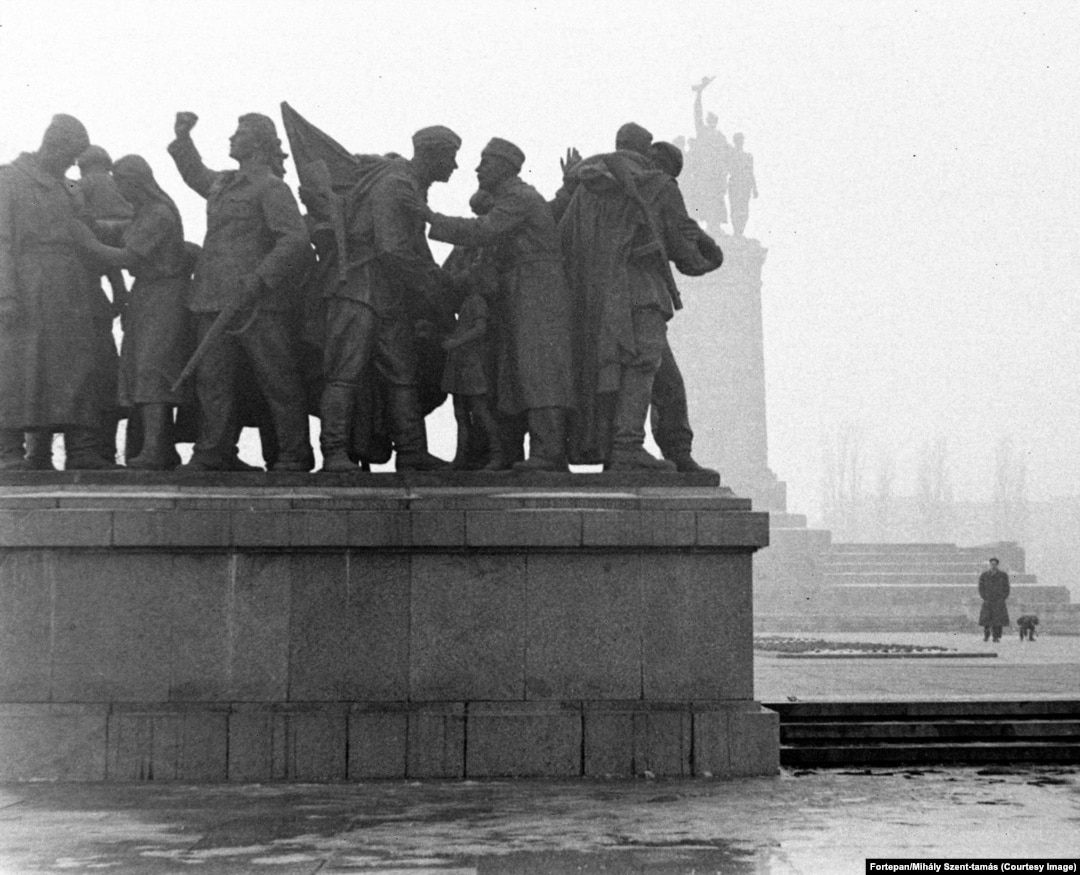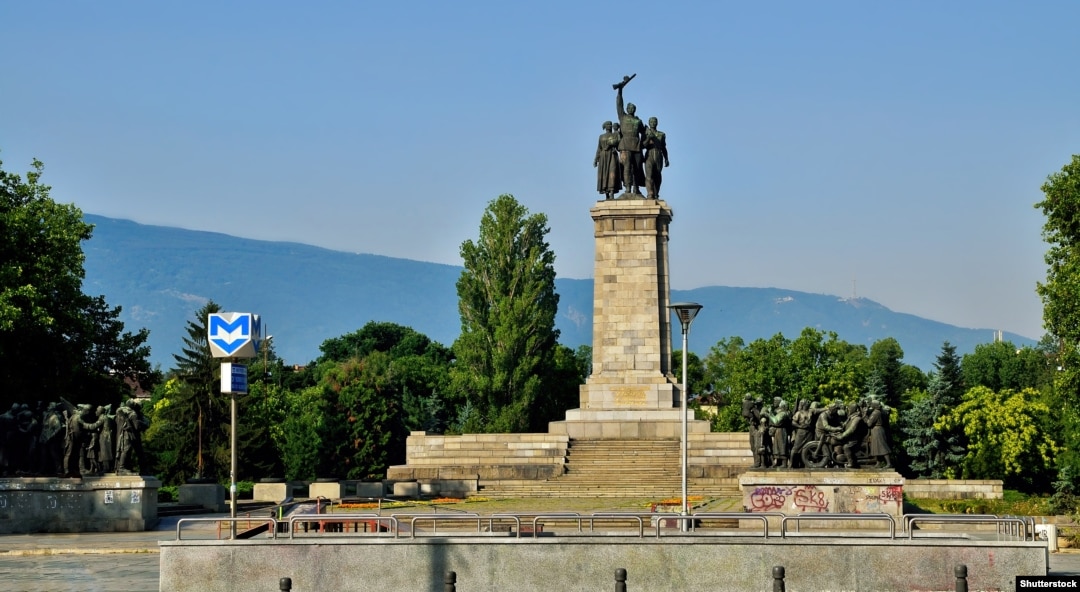The Troubled History Of Bulgaria's Soviet Monument

This damage to the base of the Monument to the Soviet Army in Sofia was photographed on February 23. The destruction shattered some plates of an inscription that reads: "To the Soviet Army liberators -- from the grateful people of Bulgaria." It's the latest damage to Sofia’s most controversial memorial.

The monument to the Red Army photographed in 1959.
The memorial complex was installed in 1954, a decade after the Soviet military entered Bulgaria during World War II. The Balkan country’s allegiances during that conflict swung from neutrality, to alliance with the Nazi-led Axis powers and participation in the Holocaust, to finally joining the Allies by the end of the war.

The Sofia memorial in 2011.
The centerpiece of the Monument to the Soviet Army is a 37-meter-high pedestal depicting a Soviet soldier flanked by Bulgarian civilians. Several other military-themed compositions are dotted around the park-sized memorial grounds.
The site has long been a rallying point for far-left activists and, in recent years, the memorial has also become a target for anti-Kremlin activism.
Members of the Bulgarian Socialist Party cleaning the monument after vandals defaced the controversial message of “gratitude” in February 2011.
In June 2011, a relief on the memorial depicting Soviet soldiers advancing in battle was illegally repainted to portray various Western comic-book characters, as well as Ronald McDonald and Santa Claus. Graffiti beneath the characters read: “Moving With The Times.”
The same relief is seen covered with colorful hoods in August 2012 in a show of support for Pussy Riot. The Russian activist group hit the headlines earlier that year after staging a controversial protest song in Moscow’s Cathedral of Christ the Savior.
Soviet soldiers were daubed in pink paint with the words “Bulgaria apologizes” in Bulgarian and Czech in August 2013. The vandalism was apparently referencing the Bulgarian communist regime's participation in the Kremlin-led crushing of the Prague Spring 45 years earlier, in 1968.
A different panel of the monument was hit in March 2014 by activists who painted two figures in the colors of the Ukrainian and Polish flags. Spray-painted text referenced the Russian takeover of Crimea and the Katyn forest massacre in which the Soviets killed nearly 22,000 captured Poles.
The memorial was given its own security in 2018. But despite the heightened security, since February 24, 2022, when Russia launched its full-scale invasion of Ukraine, the monument has been attacked multiple times. This image, showing Soviet soldiers with their hands spray-painted red, was made on February 27, 2022.
The oft-attacked panel of the Sofia memorial painted in the colors of the Ukrainian flag on February 27, 2022. Graffiti at the top of the image reads: “Occupiers.”
Anti-war activists deface the Soviet monument on February 27, 2022.
Inside Bulgaria, opinions of Russian President Vladimir Putin were mostly positive, at up to 58 percent, between 2020 and 2022, but plummeted to just 32 percent in the days after the Ukraine invasion was launched.
Graffiti, including the word “killers” in English and Bulgarian, covers the monument on February 28, 2022.
Debate over whether to demolish the monument has raged for years.
Activists wrap a Soviet sculptural ensemble in the Bulgarian flag on May 4, 2022.
Public opinion in 2019, before the invasion of Ukraine, showed that more than two-thirds of Bulgarians saw communist-era monuments as important for Bulgaria's "national identity."

